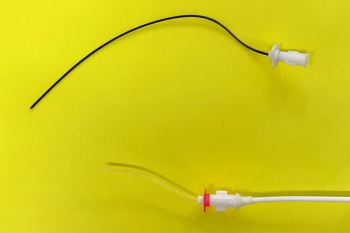
Practical Matters: Differentiate cocci from imposters in the urine
I frequently notice a disparity between referred patients' in-house urinalysis results and laboratory-read urinalysis results.
I frequently notice a disparity between referred patients' in-house urinalysis results and laboratory-read urinalysis results. Cocci are frequently identified in the in-house examinations but subsequent urinalysis and culture at a laboratory often show no evidence of bacteria. I believe this disparity occurs because tiny particles of debris, crystals, and fat droplets with brownian movement (spontaneous movement under the microscope) are misidentified as bacteria during in-house evaluations. These particles are especially prevalent in free-catch samples but can also be present in samples obtained by catheterization or cystocentesis.
Todd Deppe, DVM, DACVIM
All elements visible in the 10X field (e.g. casts, large cells) and most larger elements in the 40X field (smaller cells, most crystals, most fat droplets) can be differentiated from bacteria by size. However, I, too, often can't distinguish between cocci and other small particles. And using new methylene blue as a wet-mount stain doesn't help me because stain particles mimic cocci bacteria. To confidently differentiate between cocci and other particles, I dry a wet-mount sediment sample and stain it with a modified Wright's stain or Gram stain. Cocci reliably stain this way and are easy to distinguish from other nonstaining particles. Make sure to periodically check your stains, however, as these can be contaminated with bacteria and lead you to an erroneous diagnosis of bacteriuria.
Todd Deppe, DVM, DACVIM (internal medicine)
Veterinary Medical and Surgical Group
2199 Sperry Ave.
Ventura, CA 93003
Newsletter
From exam room tips to practice management insights, get trusted veterinary news delivered straight to your inbox—subscribe to dvm360.





